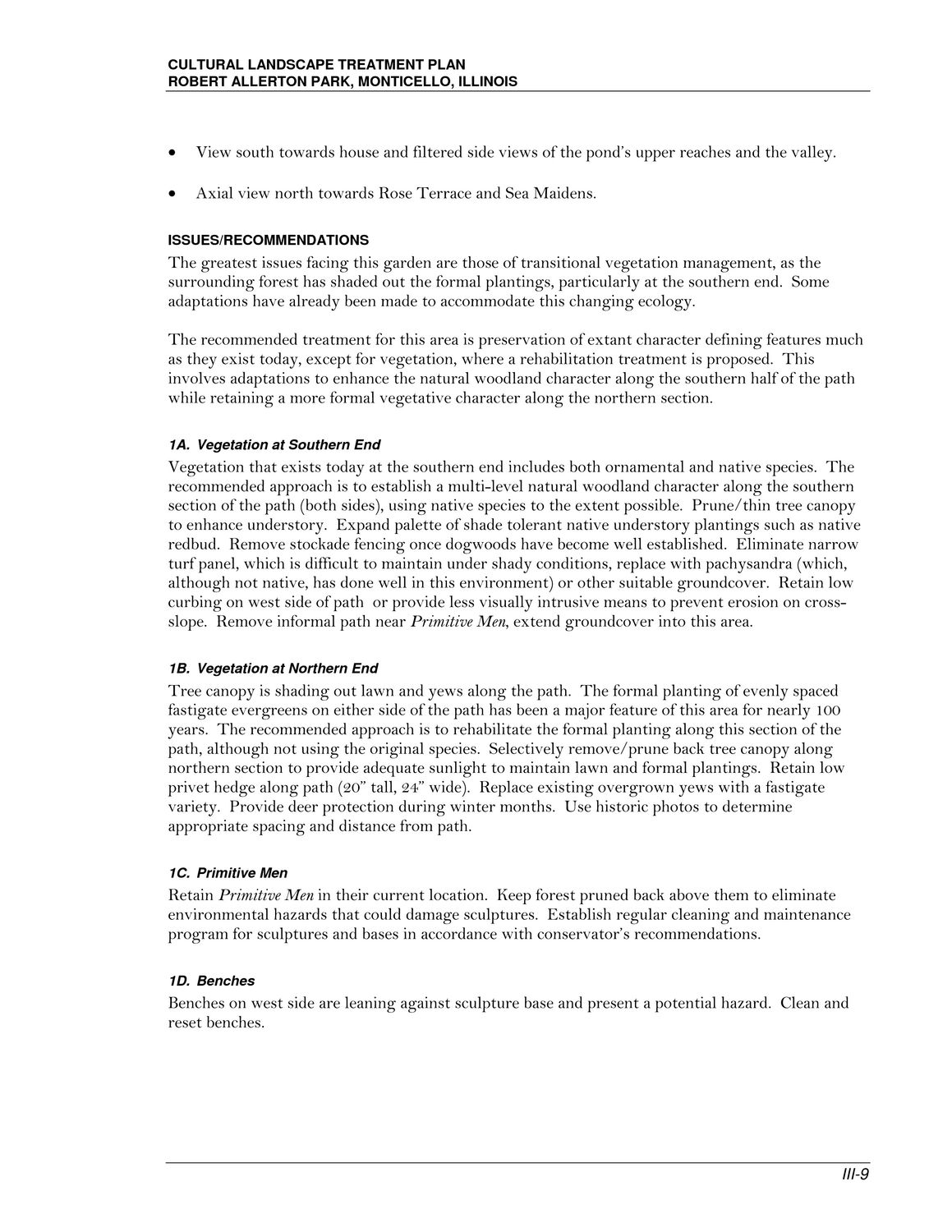Caption: Map of UIUC (2001) (Allerton)
This is a reduced-resolution page image for fast online browsing.

EXTRACTED TEXT FROM PAGE:
CULTURAL LANDSCAPE TREATMENT PLAN ROBERT ALLERTON PARK, MONTICELLO, ILLINOIS • • View south towards house and filtered side views of the pond’s upper reaches and the valley. Axial view north towards Rose Terrace and Sea Maidens. ISSUES/RECOMMENDATIONS The greatest issues facing this garden are those of transitional vegetation management, as the surrounding forest has shaded out the formal plantings, particularly at the southern end. Some adaptations have already been made to accommodate this changing ecology. The recommended treatment for this area is preservation of extant character defining features much as they exist today, except for vegetation, where a rehabilitation treatment is proposed. This involves adaptations to enhance the natural woodland character along the southern half of the path while retaining a more formal vegetative character along the northern section. 1A. Vegetation at Southern End Vegetation that exists today at the southern end includes both ornamental and native species. The recommended approach is to establish a multi-level natural woodland character along the southern section of the path (both sides), using native species to the extent possible. Prune/thin tree canopy to enhance understory. Expand palette of shade tolerant native understory plantings such as native redbud. Remove stockade fencing once dogwoods have become well established. Eliminate narrow turf panel, which is difficult to maintain under shady conditions, replace with pachysandra (which, although not native, has done well in this environment) or other suitable groundcover. Retain low curbing on west side of path or provide less visually intrusive means to prevent erosion on crossslope. Remove informal path near Primitive Men, extend groundcover into this area. 1B. Vegetation at Northern End Tree canopy is shading out lawn and yews along the path. The formal planting of evenly spaced fastigate evergreens on either side of the path has been a major feature of this area for nearly 100 years. The recommended approach is to rehabilitate the formal planting along this section of the path, although not using the original species. Selectively remove/prune back tree canopy along northern section to provide adequate sunlight to maintain lawn and formal plantings. Retain low privet hedge along path (20” tall, 24” wide). Replace existing overgrown yews with a fastigate variety. Provide deer protection during winter months. Use historic photos to determine appropriate spacing and distance from path. 1C. Primitive Men Retain Primitive Men in their current location. Keep forest pruned back above them to eliminate environmental hazards that could damage sculptures. Establish regular cleaning and maintenance program for sculptures and bases in accordance with conservator’s recommendations. 1D. Benches Benches on west side are leaning against sculpture base and present a potential hazard. Clean and reset benches. III-9
|